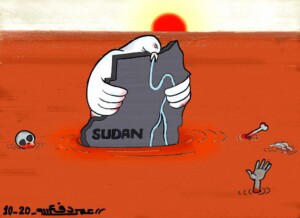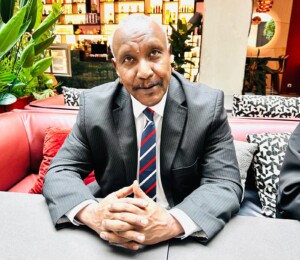Aid organisations struggle to meet education needs in Darfur
The reopening of schools in the Darfur camps for the new school year poses a significant challenge, as underfunding in the education sector is affecting education partners’ response capacities.
With the current level of funding, the education sector will not be able to sustain the education response throughout the camps in Darfur. This lack of funding will affect some 32,000 newly displaced school children in North and Central Darfur.
The reopening of schools in the Darfur camps for the new school year poses a significant challenge, as underfunding in the education sector is affecting education partners’ response capacities.
With the current level of funding, the education sector will not be able to sustain the education response throughout the camps in Darfur. This lack of funding will affect some 32,000 newly displaced school children in North and Central Darfur.
In order to accommodate the enrolment of new school-age displaced children for the 2014/2015 school year in the North Darfur camps, the education sector requires immediate funding to establish 167 temporary learning spaces and rehabilitate 350 existing education shelters.
According to the Financial Tracking System, only 29 percent of the education sector needs have been funded to date, the UN Office for the Coordination of Humanitarian Affairs (OCHA) in Sudan reported in its latest weekly bulletin.
The School Feeding Programmes account for approximately 76 per cent of these funds, leaving only 24 per cent ($4.2 million) for the support of education under “emergencies activities”.
Shortages
Key constraints include the shortage of space, seating for students, and latrines, poor conditions of existing classrooms, and a lack of new curriculum textbooks for the basic schools.
In South Darfur, 94,974 pupils are currently enrolled in 86 camp schools with 863 classrooms in total, the bulletin reads. This amounts to an average of 110 students per classroom, which far exceeds the global Minimum Standards for Education (MSE), set by the Inter-agency Network for Education in Emergencies of 40 students per classroom.
In Central Darfur, the main challenge is the issue of space in existing classrooms as well as shortage of water, sanitation and hygiene facilities in many of the camp schools. Some 175 classrooms require urgent rehabilitation.
In the three main camps for the displaced in North Darfur, Zamzam, Abu Shouk and El Salam camp, 42,287 enrolled children do not have text-books, particularly the basic school pupils. Zamzam camp, with more than 150,000 displaced one of the largest camps in Darfur, faces the most critical gaps, with overcrowded classrooms and a severe shortage of water and sanitation facilities.
National expenditure
The Sudanese government expenditure on education constitutes about one percent of its annual income, while an average of $5 billion, 23 percent of the national income, is annually spent on the war in Darfur,” Prof Hamid Eltigani Ali, economist, and head of the Department of Public Policy and Administration at the American University in Cairo told Radio Dabanga last September.
According to a research the military expenses for Darfur between 2003 and 2009 were about $10 billion. Eltigani further explained that the production losses in Darfur during this period amounted to $7 billion, while losses of life savings reached $2.6 billion, apart from the $11 billion of indirect costs for peacekeeping operations.











 and then
and then